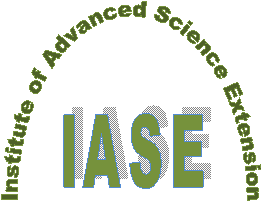International
ADVANCED AND APPLIED SCIENCES
EISSN: 2313-3724, Print ISSN: 2313-626X
Frequency: 12
![]()
Volume 12, Issue 1 (January 2025), Pages: 220-225
----------------------------------------------
Original Research Paper
Technology-enhanced learning in higher education institutions in Malaysia
Author(s):
Affiliation(s):
Faculty of Languages and Communication, Sultan Idris Education University, Tanjung Malim, Malaysia
Full text
* Corresponding Author.
 Corresponding author's ORCID profile: https://orcid.org/0000-0002-8714-8459
Corresponding author's ORCID profile: https://orcid.org/0000-0002-8714-8459
Digital Object Identifier (DOI)
https://doi.org/10.21833/ijaas.2025.01.021
Abstract
Technology has become a dominant force worldwide, influencing various fields, including education. The adoption of technologies such as artificial intelligence (AI) and digital tools has transformed teaching and learning practices, especially after the pandemic. In higher education, both instructors and students have embraced technology-based learning methods. Technology-enhanced learning aims to maintain learners' attention and engagement through active learning strategies. This study aims to assess the impact of technology-enhanced learning in higher education institutions in Malaysia, highlighting its strengths and weaknesses. A blended research approach was used, combining both quantitative and qualitative methods. Data were collected from 425 students across five higher education institutions using questionnaires as the primary research tool. The findings show that the use of smart devices in technology-enhanced learning has increased, making the learning process easier for students. The study also identifies the strengths and weaknesses of technology-enhanced learning and provides recommendations for addressing its limitations.
© 2025 The Authors. Published by IASE.
This is an
Keywords
Technology-enhanced learning, Higher education, Active learning strategies, Smart devices, Learning engagement
Article history
Received 31 August 2024, Received in revised form 6 January 2025, Accepted 10 January 2025
Acknowledgment
No Acknowledgment.
Compliance with ethical standards
Ethical considerations
This study was conducted in accordance with ethical research guidelines. Participants provided informed consent, and their anonymity and confidentiality were maintained throughout the research process. No sensitive personal data were collected, and the study posed no risks to participants.
Conflict of interest: The author(s) declared no potential conflicts of interest with respect to the research, authorship, and/or publication of this article.
Citation:
Muniisvaran K, Jose FT, Kartheges P, and Anusia K (2025). Technology-enhanced learning in higher education institutions in Malaysia. International Journal of Advanced and Applied Sciences, 12(1): 220-225
Figures
Tables
----------------------------------------------
References (17)
- Ahmad S, Wasim S, Irfan S, Gogoi S, Srivastava A, and Farheen Z (2019). Qualitative v/s. quantitative research-A summarized review. Journal of Evidence-Based Medicine and Healthcare, 6(43): 2828-2832. https://doi.org/10.18410/jebmh/2019/587 [Google Scholar]
- Berchin II, de Aguiar Dutra AR, and Guerra JBSODA (2021). How do higher education institutions promote sustainable development? A literature review. Sustainable Development, 29(6): 1204-1222. https://doi.org/10.1002/sd.2219 [Google Scholar]
- Bujang SDA, Selamat A, Krejcar O, Maresova P, and Nguyen NT (2020). Digital learning demand for future education 4.0—Case studies at Malaysia education institutions. Informatics, 7(2): 13. https://doi.org/10.3390/informatics7020013 [Google Scholar]
- Dunn TJ and Kennedy M (2019). Technology enhanced learning in higher education; motivations, engagement and academic achievement. Computers and Education, 137: 104-113. https://doi.org/10.1016/j.compedu.2019.04.004 [Google Scholar]
- Ebner M, Hell T, and Ebner M (2019). How to foster technology-enhanced learning in higher education. In: Elçi A, Beith LL, and Elçi A (Eds.), Handbook of research on faculty development for digital teaching and learning: 402-416. IGI Global, Pennsylvania, USA. https://doi.org/10.4018/978-1-5225-8476-6.ch020 [Google Scholar]
- Flavin M (2016). Technology-enhanced learning and higher education. Oxford Review of Economic Policy, 32(4): 632-645. https://doi.org/10.1093/oxrep/grw028 [Google Scholar]
- Godsk M and Møller KL (2024). Engaging students in higher education with educational technology. Education and Information Technologies. https://doi.org/10.1007/s10639-024-12901-x [Google Scholar]
- Ifenthaler D, Majumdar R, Gorissen P, Judge M, Mishra S, Raffaghelli J, and Shimada A (2024). Artificial intelligence in education: Implications for policymakers, researchers, and practitioners. Technology, Knowledge and Learning, 29: 1693–1710. https://doi.org/10.1007/s10758-024-09747-0 [Google Scholar]
- Krapookthong M (2024). Survey of technology integration in higher education in Thailand in 2019 before the disruption of COVID-19, and SWOT factor analysis in analytic hierarchy process (AHP) for ICT integration strategies. Journal of Education Khon Kaen University, 43(3): 35-55. [Google Scholar]
- Lundberg A and Stigmar M (2024). Higher education teaching quality in the aftermath of the Double disruption. Innovative Higher Education. https://doi.org/10.1007/s10755-024-09740-6 [Google Scholar]
- Marín VI, de Benito B, and Darder A (2020). Technology-enhanced learning for student agency in higher education: A systematic literature review. Interaction Design & Architecture(s) Journal, 45: 15-49. https://doi.org/10.55612/s-5002-045-001 [Google Scholar]
- Mohamed NA, Samsuddin SF, Shaffril HAM, and Bolong J (2020). Reading interest and reading pattern of rural library users in a low literacy rate area. Geografia, 16(4): 213-223. https://doi.org/10.17576/geo-2020-1604-15 [Google Scholar]
- Ramayah B and Kumar R (2020). Challenges towards online teaching during COVID 19 pandemic in Malaysia: University lecturers’ perspective. In the 13th annual International Conference of Education, Research and Innovation, IATED, Online Conference: 425-432. https://doi.org/10.21125/iceri.2020.0132 [Google Scholar]
- Sailer M, Maier R, Berger S, Kastorff T, and Stegmann K (2024). Learning activities in technology-enhanced learning: A systematic review of meta-analyses and second-order meta-analysis in higher education. Learning and Individual Differences, 112: 102446. https://doi.org/10.1016/j.lindif.2024.102446 [Google Scholar]
- Shen CW and Ho JT (2020). Technology-enhanced learning in higher education: A bibliometric analysis with latent semantic approach. Computers in Human Behavior, 104: 106177. https://doi.org/10.1016/j.chb.2019.106177 [Google Scholar]
- Sirat M and Wan CD (2022). Higher education in Malaysia. In: Symaco LP and Hayden M (Eds.), International handbook on education in South East Asia: 1-23. Springer Nature, Singapore, Singapore. https://doi.org/10.1007/978-981-16-8136-3_14-1 [Google Scholar]
- Zakariah Z, Alias N, Abd Aziz MN, and Ismail NZ (2012). E-learning awareness in a higher learning institution in Malaysia. Procedia-Social and Behavioral Sciences, 67: 621-625. https://doi.org/10.1016/j.sbspro.2012.11.368 [Google Scholar]

